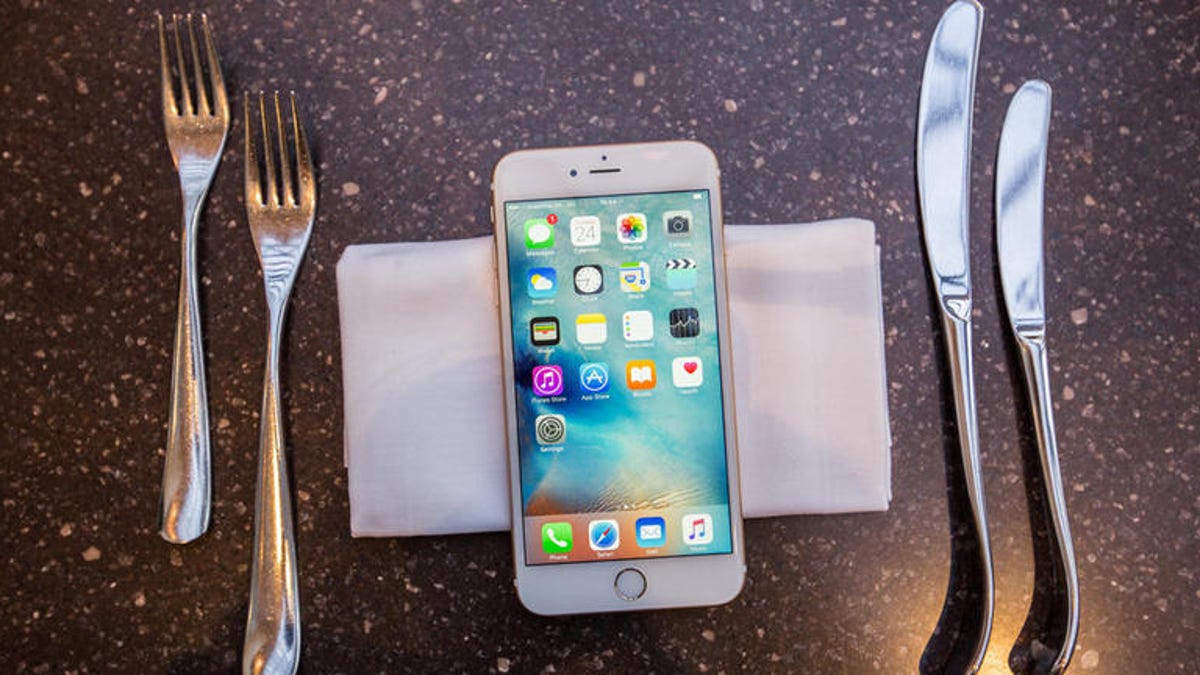Phones in 2016 will be cheaper, a bit smarter, 'microbrew'
This past year set changes in motion in the smartphone world -- and you'll be the one who benefits most.

Apple's iPhone Upgrade Program cuts out the carrier.
Advancements in the technology your phone is made of have plateaued, on that we can all agree. But I'm still excited about where smartphones will stand in 2016.
Yes, we'll see more sensitive cameras and higher-resolution screens. There will be more interesting sensors that only some of us use, and biometric scanners everywhere and anywhere you can put one. All of that matters when you pull the trigger on actually buying a new phone, but what I'm really excited about is the way that buying a handset could change for people -- as well as what you do with your new phone when you get it.
More phone makers, big and small
This past year was huge for zapping even more life out of the two-year phone contract that's despotically reigned over markets like the US. Carriers have continued to post full-retail pricing transparently and offer payment plans without penalizing customers for switching to a rival provider once the phone's all paid off. Apple in particular has wrested itself from carrier control with an upgrade program that sells customers a fresh new iPhone every year if they buy directly from Apple and not from their carrier (Apple still partners with carriers all over the world, though). "="" data-image-alt-text="" data-image-credit-url="" data-image-target-url="" data-image-title="" data-image-filename="" data-image-date-created="" data-image-crop="" data-image-crop-gravity="" data-image-aspect-ratio="" data-image-height="" data-image-width="" data-image-do-not-crop="" data-image-do-not-resize="" data-image-watermark="" data-lightbox="" rel="follow" target="_self">
"="" data-image-alt-text="" data-image-credit-url="" data-image-target-url="" data-image-title="" data-image-filename="" data-image-date-created="" data-image-crop="" data-image-crop-gravity="" data-image-aspect-ratio="" data-image-height="" data-image-width="" data-image-do-not-crop="" data-image-do-not-resize="" data-image-watermark="" data-lightbox="" rel="follow" target="_self">"="" data-image-alt-text="" data-image-credit-url="" data-image-target-url="" data-image-title="" data-image-filename="" data-image-date-created="" data-image-crop="" data-image-crop-gravity="" data-image-aspect-ratio="" data-image-height="" data-image-width="" data-image-do-not-crop="" data-image-do-not-resize="" data-image-watermark="" data-lightbox="" rel="follow" target="_self"> If this thought makes you yawn -- maybe you already live in a part of the world where off-contract and installment options are the norm -- the States' rising no-contract tide still benefits you. Opening up one of the world's most influential and lucrative markets is creating an environment where new or lesser-known brands (like Huawei, OnePlus, even the crowdfunded Nextbit Robin and Ubik Uno) can try out designs and ideas on phones they sell all over the world.
We may not see the next Samsung rise out of this direct-to-you incubator (which is sort of like the phone equivalent of microbrewing), but we will see a growing number of good options for phone-buyers, particularly Android fans.
Building the next next-best phone
Phonemakers that sell directly to buyers and keep advertising costs low can also afford to sell their wares for less than they otherwise might. We've already seen the battle shift from the most expensive, flashy models like the big, curve-screened Samsung Galaxy S6 Edge+ (and family) to much less expensive, good-enough devices like the Google Nexus 6P, Motorola Moto X Pure Edition/Style and Sony Xperia Z5 Compact.
In 2016, that fight will intensify, not for the tip-top phone -- though that will happen, too -- but for the handset giving you the biggest bang for the buck, the device that's almost as good as that top-of-the-class expensive model, but costs significantly less.
There are good reasons this is happening. Mainly, it's because the quality of internal hardware like the cameras and processor is increasing incrementally, though not by heroic measures, while the prices these components are going down. So if vendors put this year's camera on next year's phone, it will still capture high-quality photos that you'd want to use and share while also costing a little less to make.
Your phone is your life remote
Even more than it is now, your phone in 2016 will act as the remote control of your life. You already use it as a camera and as a hub for your communications and entertainment. As you continue to buy smart-home appliances and accessories, or wade into the wonderful world of virtual reality (say through inexpensive Google Cardboard and Samsung Gear VR headsets), your phone is the unifying factor that makes remote door unlocking and exploring new worlds even possible.
For example, you'll rely on your apps even more to lift your garage door and to monitor your home energy costs and savings, the same way you might currently use an app to track your monthly data usage. Mood lighting like the Philips Hue, security cameras, smart gardening sensors and even a whole-home system for connecting all your smart appliances together (like Samsung's Smart Things 2.0) all converge on the smartphone as the major tool for overseeing and adjusting.
Same too, for virtual-reality setups that use your phone's screen, processor and battery to launch visual experiences, and for automotive apps like smart door unlocking and tracking your car's health.
Watch for these trends, too
- Smartphone growth will slow for the first time as smartphone markets reach saturation
- Expect to hear about more niche startups and new-to-you global phone vendors (more choices for buyers)
- Chinese upstart Xiaomi's early success in China, India and Brazil paves the way for phone sales in the US and other countries -- expect cheaper phones to rival brands you know
- Mobile payments will become more mainstream as new players proliferate beyond just Apple Pay, Google Pay and Samsung Pay (and they'll eventually consolidate)
- Vendors will add more sensors, like one similar to Apple's pressure-sensitive 3D Force display, which could make products theoretically more interactive or data-driven
- Voice inputs like Google Now, Apple Siri and Microsoft Cortana will expand support to a great number of smart home appliances, carrying your voice experience deeper into your home
- Major high-end devices like the expected Galaxy S7 and iPhone 7 will continue to debut

